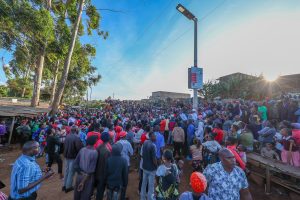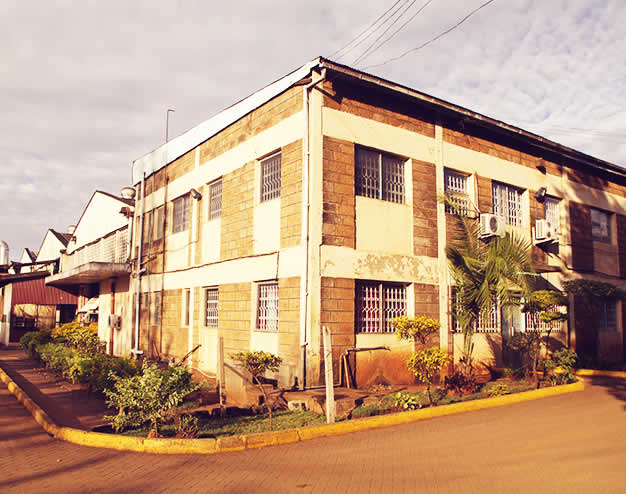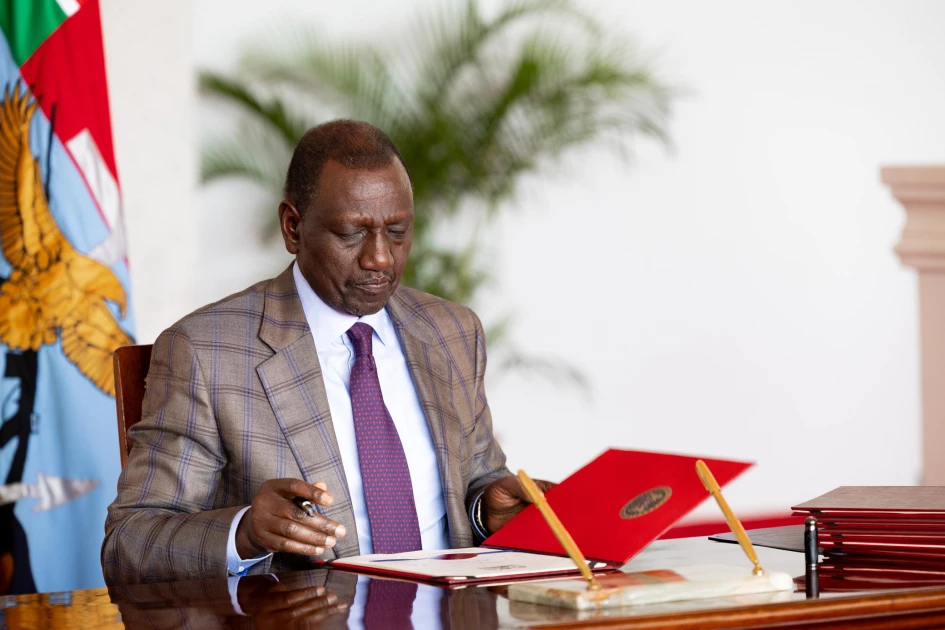Kiambu County has launched one of Kenya’s highest-capacity manlifts, a 23-metre platform designed to speed up the installation of solar-powered streetlights under its flagship renewable energy program.
The unveiling also marked the completion of Phase Two of the Ksh1 billion project, which aims to reduce electricity costs, improve security, and extend business hours across all 12 sub-counties.
Governor Kimani wa Matangi said the new equipment would cut installation time by half, allowing crews to mount up to 40 solar streetlights per day.
“This is not just about lights. It is about safer streets, thriving businesses, and lower electricity bills for taxpayers. Kiambu is setting the pace for renewable energy adoption in counties. More than 4,200 solar streetlights have already been installed since 2023, with another 5,800 expected before June 2026,” the governor stated.
Once complete, the program will light up more than 80 percent of Kiambu’s public roads—a scale rarely matched by other counties, where renewable lighting projects remain limited or donor-driven.
However, some residents and civil society groups are calling for greater accountability.
“I welcome the program, but why is it taking so long to reach our estate? Some areas are still in darkness,” said Mary Wambui, a Juja shopkeeper.
Energy Governance Kenya, an NGO monitoring county energy projects, also raised concerns about transparency. “Without clear funding disclosures, questions of accountability will linger,” a representative said at the launch.
County officials confirmed the project is fully funded through the county’s development budget, with support from local contractors and anticipated savings on electricity costs.
Kenya has committed to achieving 100 percent clean energy by 2030 under Vision 2030. Experts say Kiambu’s program could serve as a model for other counties if it proves durable and cost-effective.
Similar projects in Rwanda and South Africa have reduced public lighting costs by up to 60 percent while improving community safety.
Phase Three of the initiative, which targets feeder roads and remote villages, is set to begin early next year and conclude by June 2026. The county has also pledged to release quarterly progress reports to boost transparency.







os3f9p